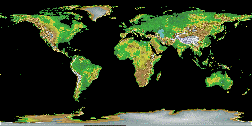




© Scott McDonald

P3: 1*2*3 Open Economy CGE Model
This module involves creating the simplest possible CGE model of trade when allowing for imperfect susbstitution. It is based on pioneering work by Sherman Robinson and associates. The import and export functions are CES and CET so the modules starts by exploring the properties of these functions.
Programme
|
|
Topic |
Tasks |
Exercises |
Files (in order) |
|
P3:1 |
CES and CET Functions |
Primal & first order conditions |
Simple maths using CES |
|
|
P3:2 |
The Basic 1*2*3 model |
CES/CET functions in a simple CGE model with trade |
Review 1*2*3 model |
|
|
P3:3 |
Coding Trade with Imperfect substitution |
Coding trade equations; calibrating CES/CET parameters; testing a model; running experiments |
Coding import and export equations |
|
|
P3:4 |
Understanding CES and CET functions |
Role of elasticities in CES/CET functions; Offer curves and ‘Dutch’ disease |
Change world price of imports; sensitivity to CES elasticity. Change trade balance; sensitivity to CES elasticity |
|
|
P3:5 |
Understanding CES and CET functions |
Role of trade shares in CES/CET functions; Offer curves |
Changes to the world price of imports and change trade shares; sensitivity to CES elasticity |
|
Readings
Armington, P.S., (1969). ‘A Theory of Demand for Products Distinguished by Place of Production’, IMF Staff Papers, Vol 16, pp 159-178.
Benjamin, N., Devarajan, S. and Weiner, R., (1989), ‘The ‘Dutch’ disease in a developing country: Oil reserves in Cameroon,’ Journal of Development Economics, 30(1): 71–92.
Devarajan, S., Lewis, J.D. and Robinson, S., (1990). ‘Policy Lessons from Trade-Focused, Two-Sector Models’, Journal of Policy Modeling, Vol 12, pp 625-657.
Sen, A.K., (1963). ‘Neo-classical and Neo-Keynesian Theories of Distribution’, Economic Record, Vol 39, pp 53-64.